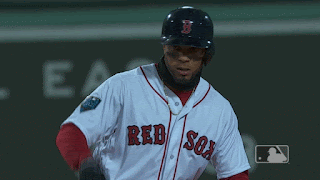Background:
Cordero has all the tools. He's the type of player who if the only thing you knew about him was watching him take batting practice or observing workouts, you'd think he was a star. Cordero hits the ball HARD. From 2017-2020, among hitters with at least 300 plate appearances, the 26-year-old ranks ninth in average exit velocity. That comes in right between Giancarlo Stanton and Matt Chapman.
The issue is that caveat - the 300 PAs needed to use that stat. That's an absurdly low number for a four-year stretch, and it highlights just how much development time Cordero has missed due to injuries over the years. He has always been raw. Ever since signing out of the Dominican Republic as a teenager in 2011, Cordero has been someone who needed a chance to develop. However, we're now in 2021, and we're still describing Cordero as raw.
2020:
In addition to the power and ability to impact the baseball, Cordero has historically suffered from a lot of swing-and-miss in his game. This led to the most drastic improvement from last summer, which was a massive reduction in his whiff rate. We're dealing with ridiculously small samples, but Cordero whiffed on just 20.2% of his swings last year (compared to 35.7% for his career). If he can maintain that in 2021, he'll have a chance to be a productive big leaguer.
Again, he only played in 16 games with the Royals last summer (after spending the beginning of his career with the Padres). 16 games! Following his inclusion in the Andrew Benintendi trade, he's now on his third organization in three years. The Red Sox obviously see upside in his profile. Anyone with access to Baseball Savant knows that Cordero has a high ceiling. The issue is whether we'll still be talking about his potential 2-3 years from now.
Contract Situation:
Whereas Benintendi is a free agent after 2022, Cordero won't be on the open market until post-2023. Remember, though, that the trade wasn't just about him. The Sox got four additional prospects to continue replenishing their farm system as well.
2021 And Beyond:
Spring Training has been brutal for Cordero. He's still on the COVID-19 injured list and manager Alex Cora recently said he might not be ready for Opening Day. This is a killer for a player who simply needs as much developmental time as he can get.
As for his role once he's ready, Cordero is a lefty hitter who should mostly play left field against right-handers. Until he shows more (any?) consistency as a ballplayer, Cordero is unlikely to be a true everyday player.






















